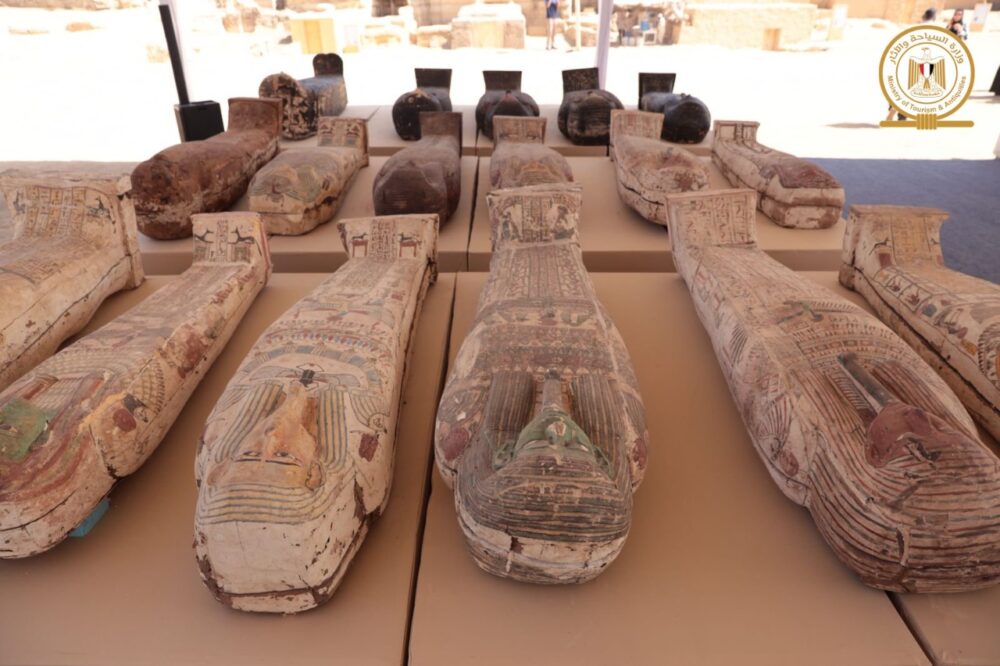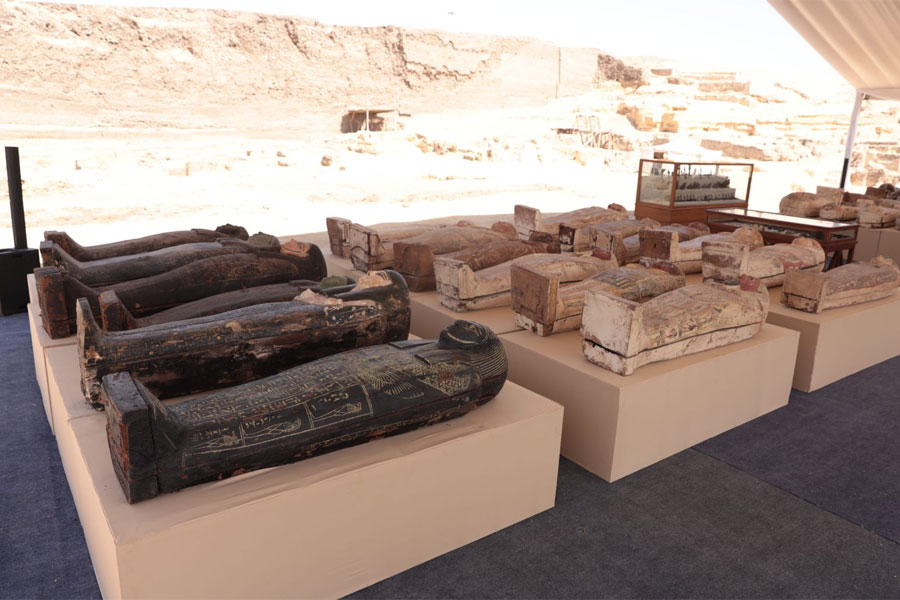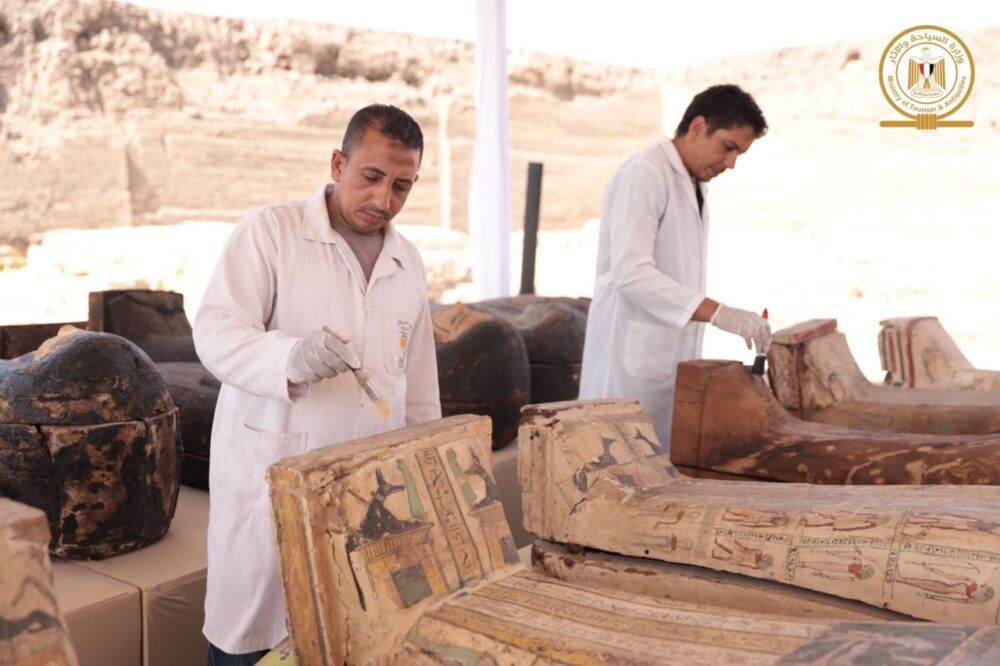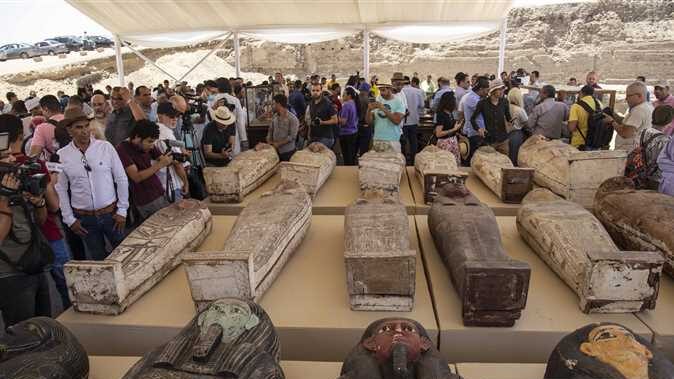An Egyptian archaeological mission in the Bubastian Cemetery at the Saqqara Necropolis unearthed a collection of 250 wooden painted coffins and the biggest ever bronze cachette containing a collection of 150 bronze statues of ancient Egyptian deities of different sizes.
The mission was led by Moustafa Waziri, the secretary-general of the Supreme Council of Antiquities.
The statues depict the ancient Egyptian deities Bastet, Anubis, Osiris, Amunmeen, Isis, Nefertum, and Hathor, as well as instruments used during the Isis rituals, such as the sistrum.
A very well-carved headless statue of engineer Imhotep was also uncovered.
A collection of Late Period painted intact wooden coffins with mummies was also unearthed inside burial shafts along with amulets, wooden boxes, and statues with gilded faces.

Additionally, a distinguished duo painted statue depicting deities Isis and Neftis mourning the dead was found as well.
A papyrus written in hieroglyphs was found during excavations inside one of the coffins and may contain verses of the Book of the Dead, Waziri said, adding that it was transferred to the laboratory of the Egyptian Museum in Tahrir to study and uncover what it contains.
A collection of cosmetics was also found, including combs, kohl eyeliners, containers, bracelets, earrings and seed necklaces, along with some tools used in day-to-day life.
Waziri affirmed that the coffins will be transferred to the soon-to-be-inaugurated Grand Egyptian Museum (GEM) to be among the display of the museum’s main halls.

This archaeological mission has been working in this area in Saqqara Necropolis since 2018 and has so far made several discoveries, including collections of artefacts, coffins, and human and animal mummies.
In 2020, the mission succeeded in uncovering more than 100 closed wooden coffins in their original state from the Late Period inside burial wells, and 40 statues of the god of the necropolis of Saqqara Ptah Sokar with gilded parts, and 20 wooden chests of the god Horus.
This discovery has been classified as one of the ten most important archaeological discoveries in 2020, according to American Archeology magazine.







Discussion about this post